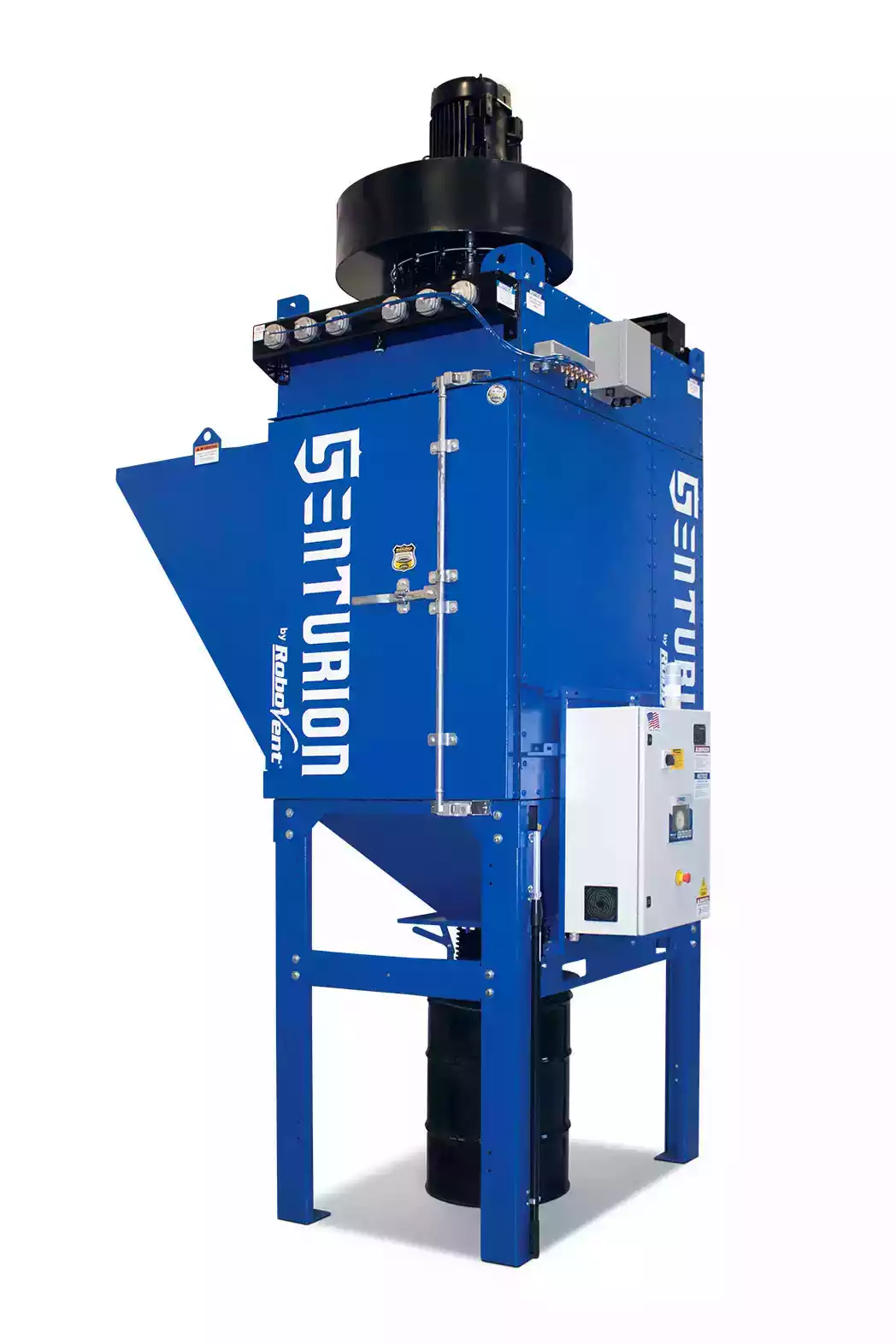Energy Incentives for Dust Collection: Unlocking Savings While Improving Efficiency
Upgrading your dust collection system can lead to big energy savings. But did you know your power company may help cover the bill? Many power providers offer rebates and financial incentives to help businesses invest in energy-saving motors, smart control systems and advanced industrial air filtration solutions. These programs can significantly reduce the upfront cost of upgrades while improving long-term efficiency.
If you’re looking to cut energy costs, improve air quality and maximize savings, now is the perfect time to explore your options. Here’s what you need to know.

Energy incentives from your power company could help you pay for energy-saving improvements to your dust collection system and other industrial systems.
What Are Energy Incentives for Industrial Customers?
Energy incentives are financial programs offered by utility companies to encourage businesses to adopt energy-efficient technologies that reduce overall power consumption. These incentives typically come in the form of rebates, grants, or cost-sharing programs, helping companies offset the cost of upgrading to high-efficiency equipment. By making energy-saving improvements more affordable, these programs help businesses lower operating costs, improve sustainability, and extend the life of their equipment.
Utility companies offer these incentives because reducing energy demand benefits both businesses and the electrical grid. Lowering overall power consumption helps utilities manage peak demand, reduce strain on infrastructure, and delay costly investments in new power generation facilities. In return, businesses that participate in these programs gain access to state-of-the-art, energy-efficient solutions with a reduced upfront investment.
There are two main types of energy incentives:
- Prescriptive Incentives: These are set rebates for pre-approved equipment, such as variable speed drive (VSD) motors or high-efficiency fans. If a piece of equipment meets the program’s criteria, businesses can receive a fixed rebate amount without needing prior approval.
- Custom Incentives: These programs offer tailored financial incentives based on the energy savings of a specific project. Custom incentives require pre-approval and often involve an engineering review to determine potential energy reductions. Advanced dust collection systems with smart, demand-based control technology, like RoboVent’s SAVE system, typically fall under this category.
Both types of programs provide valuable opportunities to cut energy costs and improve operational efficiency.

Don't leave money on the table! Your power company may have incentives to help cover the cost of energy-saving improvements to your dust collection system.
Energy Incentives for Dust Collection and Industrial Air Filtration
Industrial dust collection and air filtration systems are essential for maintaining clean air, worker safety and regulatory compliance, but they can also be significant energy consumers. Fans and motors for industrial dust collectors can drive up energy costs, especially when systems are running inefficiently or using outdated technology. To help businesses reduce energy consumption and improve system efficiency, many utility companies offer rebates and financial incentives for upgrading to high-efficiency dust collection and air filtration equipment.

RoboVent dust collectors are available with Variable Frequency Drive (VFD) motors to reduce energy use.
These incentives typically cover a range of energy-saving improvements for dust collection and air filtration. These may include:
- Variable Frequency Drive (VFD) Motors: Traditional fixed-speed motors operate at full power regardless of airflow demand, wasting energy when full power isn’t necessary. VFD motors (also called variable speed drive or VSD) automatically adjust motor speed to match real-time airflow needs, reducing energy consumption and extending equipment life. Many utilities offer prescriptive rebates for installing VFD motors on dust collection fans and blowers.
- Smart, Demand-Based Control Systems: Intelligent control systems, like the Nederman SAVE system, optimize dust collection by adjusting fan speeds and airflow based on real-time demand. Instead of running at full capacity all the time, these systems ramp up or down as needed, reducing energy use while maintaining effective dust capture. Because these systems significantly improve efficiency, they often qualify for custom incentive programs that reward businesses based on the amount of energy saved.
- Upgrading from Exhaust Ventilation to Air Filtration: Traditional exhaust ventilation systems remove contaminated air from a facility and discharge it outdoors, requiring costly makeup air to replace conditioned air that is lost. Switching to a filtration-based dust collection system allows businesses to capture contaminants while recirculating clean, filtered air back into the facility. This reduces HVAC energy demands, lowers heating and cooling costs, and improves overall energy efficiency. Many utilities offer incentives for switching from exhaust ventilation to advanced filtration systems, particularly in industries like metal fabrication, welding and manufacturing.
- Process System Improvements: Many incentive programs recognize that system design improvements can also lead to energy savings. Utility incentives may cover upgrades that reduce static pressure in ductwork, improve airflow distribution or enhance filtration efficiency. These changes reduce the amount of fan power required to maintain airflow, helping businesses lower operational costs.
By taking advantage of these energy efficiency incentives, companies can reduce the upfront cost of equipment upgrades while cutting long-term energy expenses. However, navigating these programs can be complex, as eligibility requirements, application processes and savings calculations vary by utility provider. Working with an experienced partner can help ensure you maximize available incentives while implementing the best energy-saving solutions for your facility.
Let RoboVent Help You Maximize Energy Incentives
Navigating energy incentive programs can be complex, but you don’t have to do it alone. At RoboVent, we specialize in helping businesses identify and secure energy rebates and incentives for dust collection and air filtration system upgrades. Our team understands how these programs work and can guide you through the process—from determining which incentives apply to your facility to ensuring your upgrades meet program requirements.
Whether you’re considering VSD motors, smart control systems, or switching from exhaust ventilation to filtration, we can help you find the most cost-effective solution while taking full advantage of available utility incentives in your area. Don’t miss out on potential savings! Contact us today to learn more about energy-saving opportunities and how we can help you improve efficiency while reducing costs.
Contact Us With Your Questions!
SUBSCRIBE TO
BLOG UPDATES









